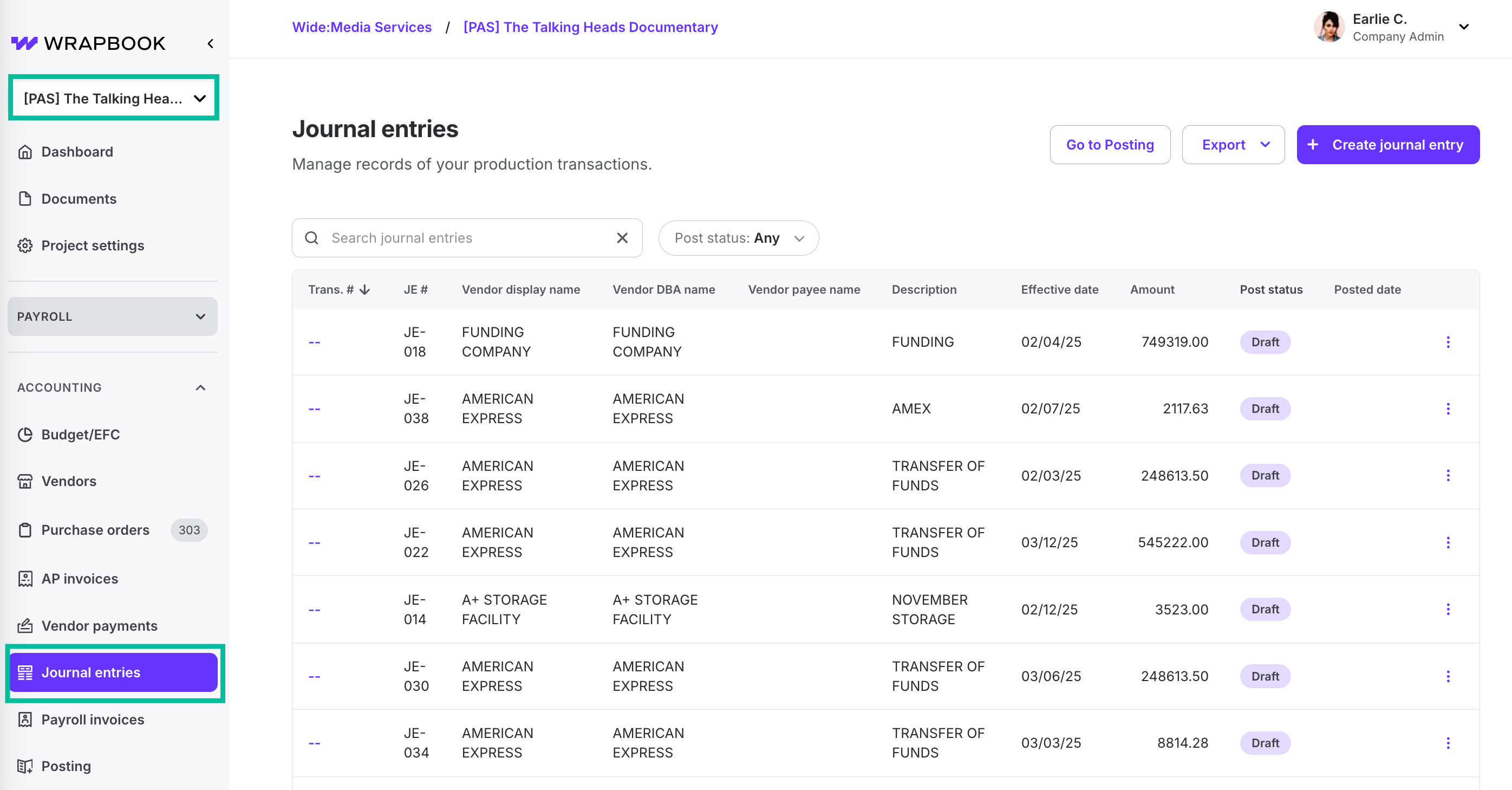Overview
Journal entries (JEs) are used to capture transactions that aren't specifically related to vendor invoices or payroll, such as initial project funding or bank fees. While JEs can have vendors attached, this is optional, unlike AP invoices where a vendor is required.
When mistakes occur, production accountants can reverse JEs to correct errors without deleting or altering the original entries, which helps maintain the integrity of financial records.
In Wrapbook’s Production Accounting Suite (PAS), JEs contain the following information:
A date of the transaction
At least two accounts affected (debit and credit entries)
The amounts involved
A description explaining the transaction
Access JEs
Accessing JEs in PAS is permission based
To access JEs, your account must have one of the following roles enabled:
Role: Company Admin, Accountant
Custom role with: Journal entries - Full access, Create and manage, View only
To access JEs:
In the left-side navigation, click the dropdown menu
In the dropdown menu, select the project that you want to view JEs for
In the left-side navigation Accounting menu, click Journal entries

Select a project, then click Journal entries
Using the Journal entries dashboard
On a project’s Journal entries dashboard, the JEs are listed by their transaction number in the Trans. # column along with the following details:
Trans. # - Transaction number auto-generated by Wrapbook
JE # - User generated, alpha-numeric field required to save any new transaction (20 character limit)
Vendor - Vendor associated with the JE
Description - Transaction header description (Example: May 2023 AMEX Bill)
Period or Effective date - The date that the transaction will be reflected in your balances
Amount - Sum total of all positive amounts for every detail row connected to the transaction
Post status - Either Draft, Unsaved changes, Unposted, or Posted
Posted date - Posted date will populate after posting the entry to the GL
On the dashboard you can:
View JE transaction details - Click on a link (the link will either be - - or a number) to see the JE transaction record
Search JEs - Use the Search bar to find specific JEs
Filter JEs - Click the Post status button to filter options to narrow your search. You can filter by Draft, Unsaved changes, Unposted, and Posted.
JE status
On the Journal entries dashboard, each JE will have a status of either:
Draft - When a JE is first created and saved, it becomes a draft transaction that can still be edited
Unsaved changes - When changes to a JE are made but haven’t been saved
Unposted - After the JE is balanced (total equals $0) and saved, it becomes an unposted transaction
Posted - Once the transaction is posted, certain fields become locked and the entry is added to the General Ledger (GL)
Reversed - Used for cancelling posted JEs
JE actions
From the Journal entries dashboard you can: